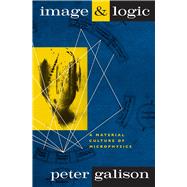
| List of Figures Preface | |
| Introduction: Image and Logic | |
| Cloud Chambers: The Peculiar Genius of British Physics | |
| Nuclear Emulsions: The Anxiety of the Experimenter | |
| Laboratory War: Radar Philosophy and the Los Alamos Man | |
| Bubble Chambers: Factories of Physics | |
| The Electronic Image: Iconoclasm and the New Icons | |
| Time Projection Chambers: An Image Falling through Space | |
| Monte Carlo Simulations: Artificial Reality | |
| The Trading Zone: Coordinating Action and Belief Abbreviations for Archival Sources | |
| Bibliography | |
| Index | |
| Table of Contents provided by Publisher. All Rights Reserved. |
The New copy of this book will include any supplemental materials advertised. Please check the title of the book to determine if it should include any access cards, study guides, lab manuals, CDs, etc.
The Used, Rental and eBook copies of this book are not guaranteed to include any supplemental materials. Typically, only the book itself is included. This is true even if the title states it includes any access cards, study guides, lab manuals, CDs, etc.